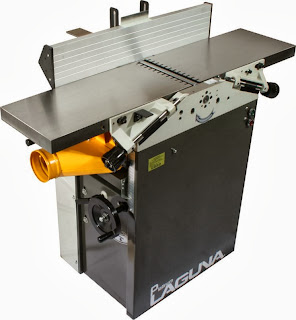Size Up Your Options
Like many shop tools, jointers come in bench and floor varieties. Bench jointers are relatively small units that are meant to be bolted to a stand or a tabletop. The larger floor jointers are mounted on a heavy base that sits directly on the floor of your shop.Manufacturers and retailers also group jointers by the size of their knives. You'll see listings for 6-inch, 8-inch, and (for industrial applications) 12-inch jointers. The measurement refers to the maximum surface width the jointer can act upon. For most hobbyist work, a 6-inch jointer is adequate; such a jointer can comfortably handle the broad face of a two-by-six. Be aware that manufacturers' dimensions aren't always precise: jointers of almost any size can handle up to a quarter-inch more than their measurement implies.
Features Checklist
As you compare jointers, be sure to take note of specifications and look for the values below.- Cutting depth: A jointer works by allowing you to position its infeed table (the surface on which the raw workpiece enters) below its outfeed table (the surface on which the workpiece exits after being cut). If you lower the infeed table 1/8 inch, the spinning knives will trim away 1/8 inch of wood. This value is called the cutting depth. The maximum cutting depth of a jointer is an important indicator of its capabilities, ranging from 1/8 inch or so for bench jointers to more than 1/2 inch for large floor jointers. (A hint for hobbyists: if you want to remove more than 1/8 inch of wood from a workpiece, you really ought to be using a table saw instead of a jointer.)
- Fence features: Jointers have a vertical surface called a fence that holds your workpiece at a consistent angle to the knives. The fence should adjust to any angle between 90 degrees (vertical) and 45 degrees away from the cutterhead. It should also have a clear fence-angle gauge and positive stops at the 45- and 90-degree positions.
- Knife count: Most jointers have cutterheads that comprise three knives, this is a standard count. However, make sure your jointer comes with a set of replacement knives. When your knives get dull, you'll be able to swap in the backups while the original set is out being sharpened.
- Motor power: The electric motors that provide jointers with their whirling fury are rated in horsepower. The power you need depends upon the kinds of cuts you'll be making, deeper, wider cuts require more energy but all things being equal, you want the most powerful motor you can afford. A stronger motor will be less strained by any given job than a weaker motor, and so will last longer. Motor ratings range from 3/4 hp for bench jointers to 2 hp or more for big floor models.
- Motor speed: Many jointers allow you to vary the speed of their knives to suit materials of different hardnesses. When comparing speed settings, be aware that some manufacturers cite revolutions per minute (rpm), while others cite cuts per minute. Cuts per minute equals revolutions per minute times the number of knives in the cutterhead. Compare apples to apples, and look for models that allow adjustment between about 5,000 and 10,000 rpm.
- Rabbeting capability: Many jointers feature a built-in surface called a rabbeting ledge along which you can slide your workpiece to create a rabbet, or step-shaped cut.
- Table size: A jointer's infeed and outfeed tables should match the size of the work you plan to do. While it's important that your workpiece be well supported at all points in the jointing process, don't shun a particular model because its tables seem short. It's pretty easy to build table extensions yourself.
